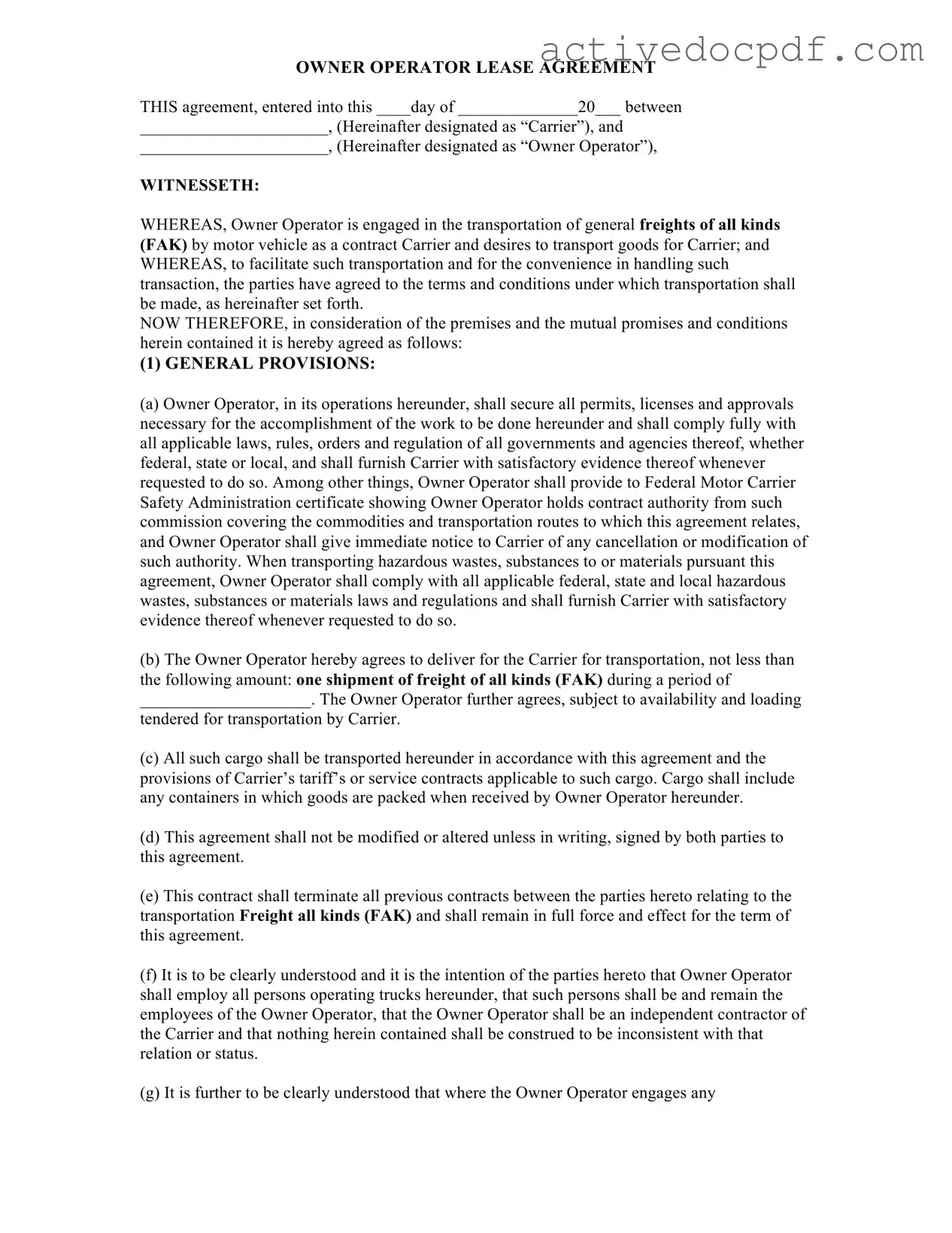What is an Owner Operator Lease Agreement?
An Owner Operator Lease Agreement is a legal document that outlines the terms and conditions under which an owner-operator provides transportation services to a carrier. This agreement specifies the responsibilities of both parties, including compliance with laws, insurance requirements, and liability issues.
Who are the parties involved in this agreement?
The agreement involves two primary parties: the Carrier and the Owner Operator. The Carrier is the entity that hires the Owner Operator to transport goods, while the Owner Operator is an independent contractor who owns and operates their own vehicle for freight transportation.
What are the general provisions outlined in the agreement?
The general provisions cover a variety of topics, including:
-
Permits and licenses: The Owner Operator must secure all necessary permits and comply with applicable laws.
-
Delivery commitments: The Owner Operator agrees to deliver a specified amount of freight during the contract term.
-
Indemnification: The Owner Operator is responsible for defending and indemnifying the Carrier against various liabilities.
-
Subcontracting: If the Owner Operator hires subcontractors, they remain responsible for compliance and performance.
What insurance requirements must the Owner Operator meet?
The Owner Operator must maintain insurance coverage that complies with federal and state regulations. This includes cargo insurance, personal injury coverage, and general liability insurance. The Owner Operator is also required to provide proof of insurance to the Carrier and ensure that all policies include the Carrier as an additional insured party.
What happens if the Owner Operator fails to comply with the agreement?
If the Owner Operator fails to comply with the terms of the agreement, they may face legal repercussions. This includes potential liability for damages, penalties, and the obligation to indemnify the Carrier for any losses incurred as a result of non-compliance.
Can the Owner Operator assign their contract to another party?
No, the Owner Operator cannot assign the contract to another party without the written consent of the Carrier. This ensures that the Carrier maintains control over who is providing transportation services under their name.
How are payments structured under this agreement?
Payments are typically structured based on the rates and charges outlined in an attached rate schedule. The Carrier agrees to pay the Owner Operator within sixty days of receiving an invoice for services rendered.
What confidentiality obligations does the Owner Operator have?
The Owner Operator is required to treat the terms of the agreement and any proprietary information about the Carrier's business as confidential. They must not disclose this information to third parties without prior written consent from the Carrier.
